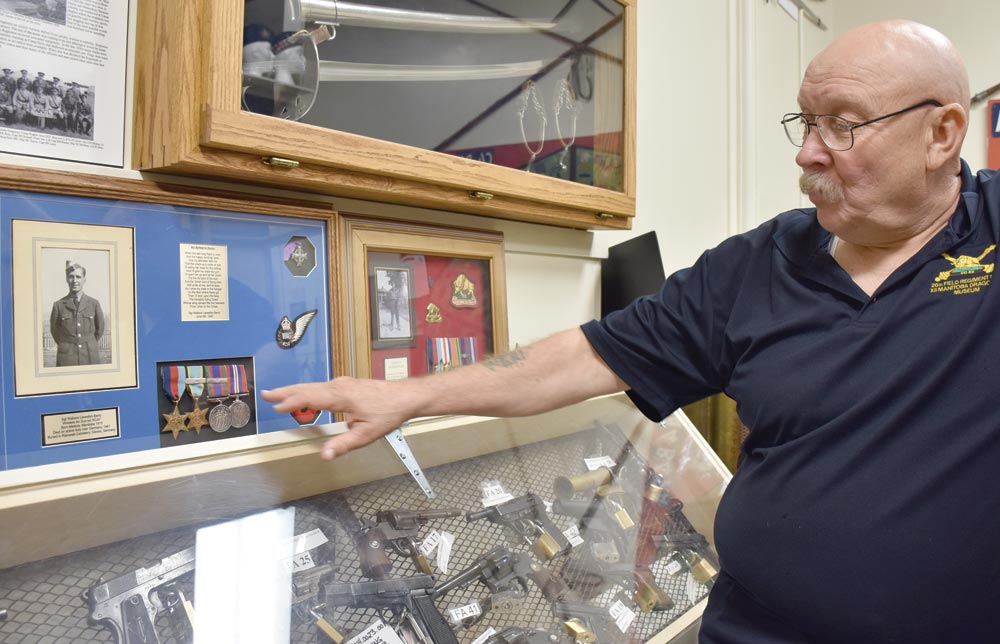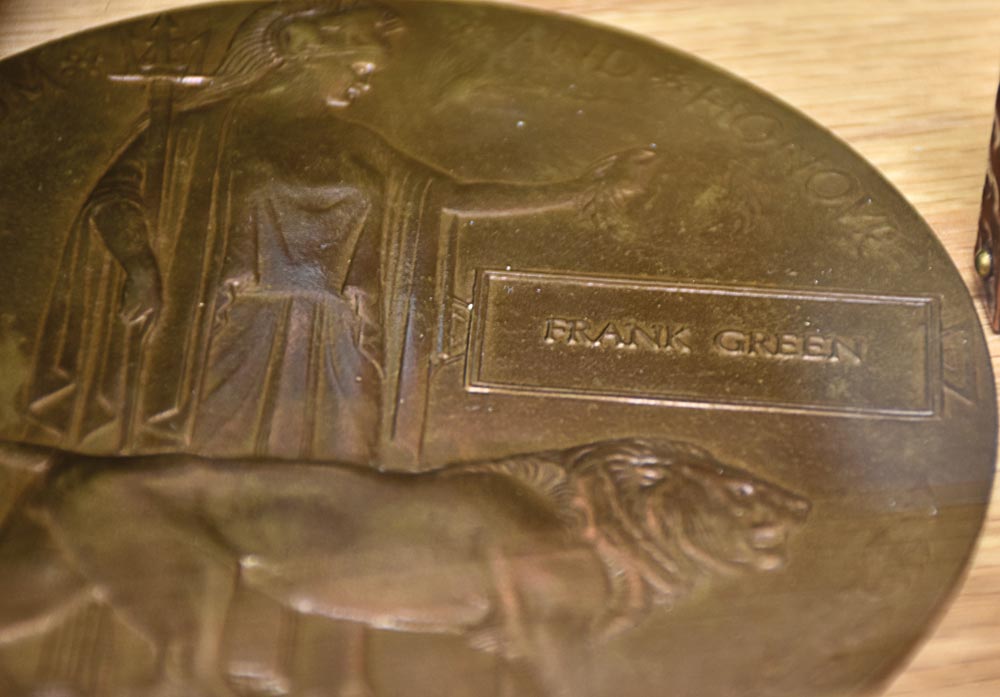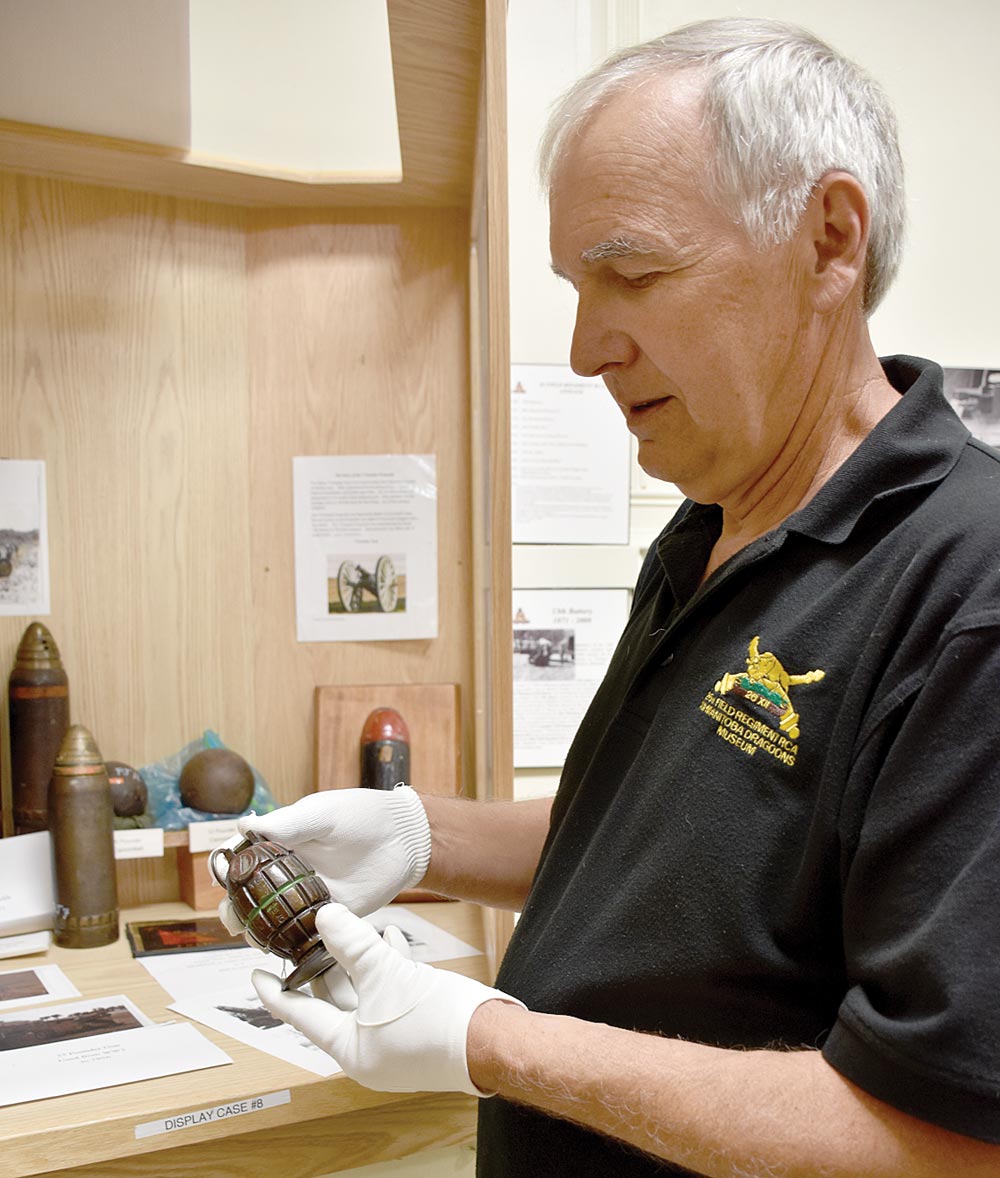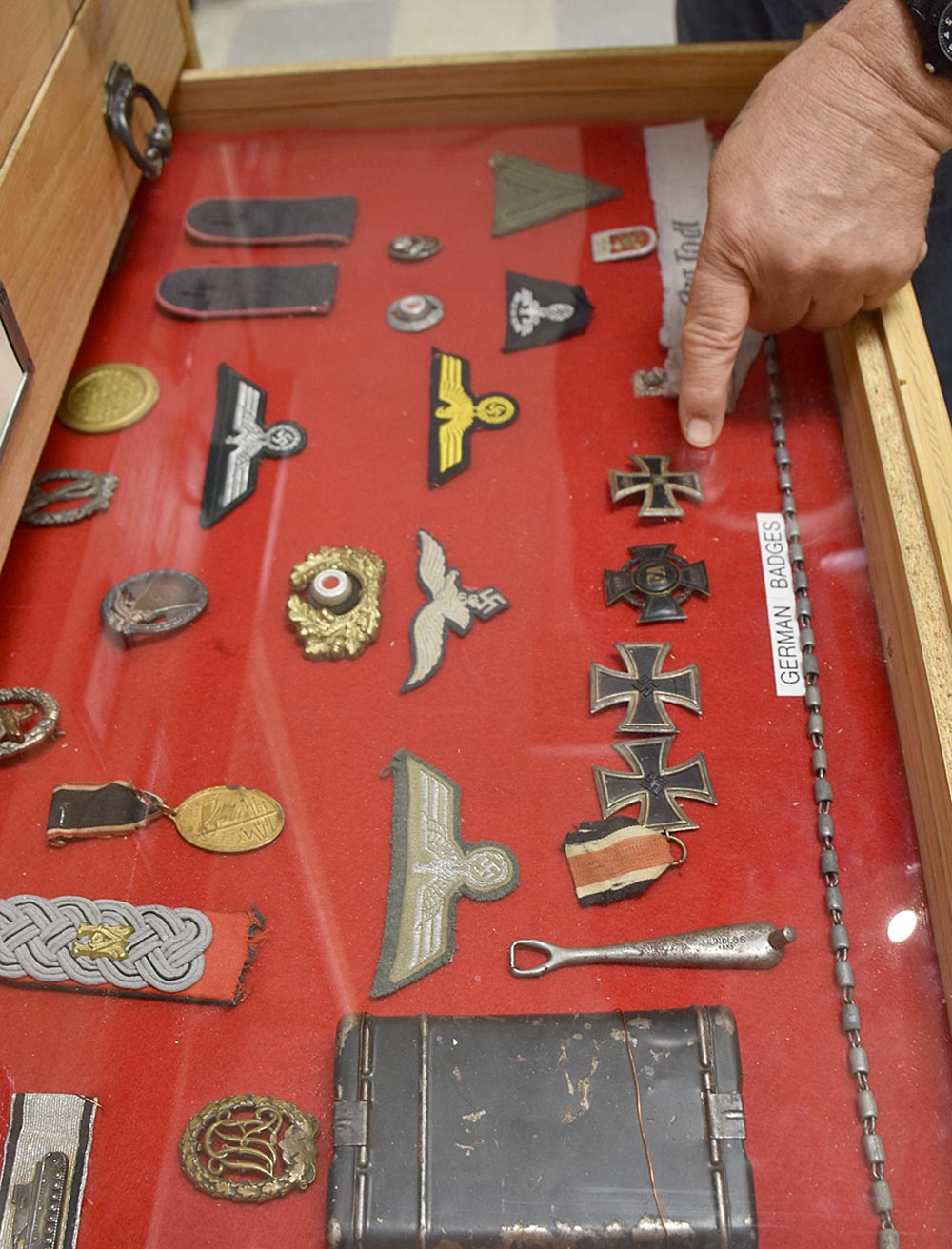

Shilo Stag
Did you know ammunition used by soldiers in the Great War was manufactured in Brandon?
Manitoba Engines Ltd Foundry was located at 803 Assiniboine Ave., where the company manufactured 18-pound and Howitzer projectiles. The 18-pound rounds made in the city can be identified by the “ME” cypher stamped into them.
The 26th Field Brandon RCA/XII Manitoba Dragoons Museum has two 18-pound rounds in its collection — both were donated. Artifacts continue to roll in everyday at the museum.
Curator Ed McArthur is proud to be a part of the team preserving Canadian military history. It’s not just artifacts they have on hand, there’s also an extensive archive and library.
“I think it’s important to a have the museum so people can come in with a name and maybe a service number and research the history of these soldiers,” he said, adding often people don’t know the value of items they possess.
Much of the collection is donated. McArthur said Brandon has changed a lot in the last 100-plus years. There are also photographs showing how different areas of the city looked while training for different units was occurring plus at Camp Hughes, and later Camp Shilo, east of the city.
A miniature reconstruction of what part of the city looked like a century ago is on display showing the area near Brandon Avenue between 13th and 19th Streets. It shows the area behind what is now the Ag Centre. It was converted from a teachers college into the Canadian Army Training Centre. It still stands and is the only building left from that era.
Another element of history you can find at the Brandon armouries is what one farmer once fashioned into a patio stone.
“That big stone on the bottom there, with the artillery crest on it. That used to sit above the [fireplace at] Officers’ Mess at the Canadian Army training Centre, which used to be on 13th Street,” he explained. “At the end of the war the buildings were used for PMQs for soldiers coming back with families. Also, it was converted into the Assiniboine Sanatorium.
“That big block of cement is almost five-inches thick and it used to sit above the fireplace in the Officers’ Mess. The guy that bought the building was a farmer, he took it out and he turned it face down and used it as a patio stone. When the property changed hands they turned it over and saw that, and somebody said well that should go to the museum.”
It now sits in what used to be a door frame to a lounge in the armouries. There are still steps and you can still make out the old frame. McArthur said the reason for this is because the armouries falls under the category of a historic building, so they added an insert to the door and mounted the plaque.
On the other side of that door is where you will find the building’s museum. The room is lined with displays and features a number of headdress and weapons on the walls and bannisters.
Clothing from the First and Second World Wars are on display as well as a collection of items from Jack Bennett’s time as a Prisoner of War (POW).
“Bennett was an artillery soldier with the Royal Artillery and he was in Singapore,” he explained. “He got there in — I think it was November 1941 and he was captured by the Japanese in February 1942. He spent the rest of the war in a Prisoner of War camp. We have his — he became a collector— when he left the Prisoner of War camp, all he had was a loincloth. That was it. We have his loincloth here and we have his collection.”
One artifact on display is the Deadman’s Penny, which is of particular interest to McArthur.
“[It] is a bronze plaque, it’s circular, it’s about four-and-a-half-inches in diameter,” said the curator. “It has inscriptions on it with Britannia and things in the nature of interest to the military in the First World War. There is a little rectangular box on it and in that is a persons name. [For] every soldier that died in the First World War, one of these memorial plates was issued by the King with a little letter that went with it in memory of his service.”
The penny stemmed from not bringing bodies of soldiers Killed in Action (KIA) home, with the military establishing war grave in cemeteries near where soldiers fell in battle. It was issued to the mother of the fallen, with the idea of having it placed on the parents’ gravestone.
McArthur believes any community with a military history should try to invest in a museum or a location to showcase artifacts.
“If you do not record your history and have it [where] it’s accessible to the public, then you’re bound to lose that history,” he offered. “Whether it be the information side of it or the actual artifacts that pertain to the information.”
For more on the 26th Field Regiment Museum stop by 1116 Victoria Ave. in Brandon or go online at https://www.26fdregmuseum.ca/
Plus visit www.12mbdragoons.com/tour



